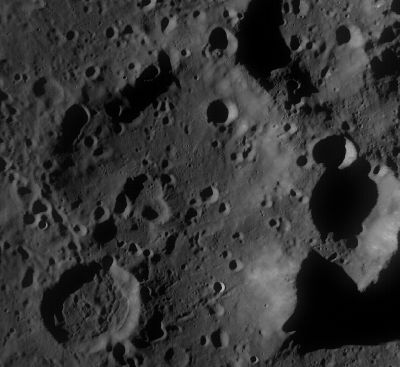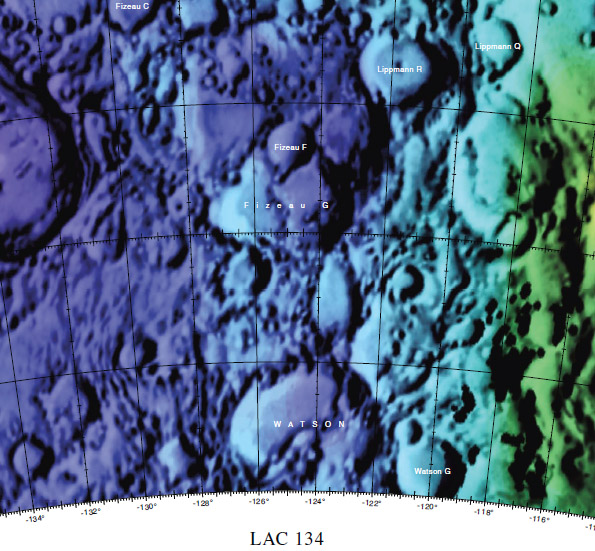Difference between revisions of "Watson"
| (One intermediate revision by the same user not shown) | |||
| Line 5: | Line 5: | ||
|} | |} | ||
<div id="toc"> | <div id="toc"> | ||
| − | + | [http://www.lpod.org/coppermine/displayimage.php?pid=5133&fullsize=1 [[Image:Normal_watson.jpg|external image normal_watson.jpg]]]<br /> ''[http://lroc.sese.asu.edu/index.html LROC]'' WAC image (No. [http://wms.lroc.asu.edu/lroc/view_lroc/LRO-L-LROC-2-EDR-V1.0/M118300820ME M118300820ME]). Calibrated by [http://ltvt.wikispaces.com/Utility%20Programs#WAC_Viewer LROC_WAC_Previewer].<br /> <br /> | |
| − | |||
==Images== | ==Images== | ||
[http://www.lpod.org/coppermine/thumbnails.php?album=search&type=full&search=Watson LPOD Photo Gallery] [http://www.lpi.usra.edu/resources/lunar_orbiter/bin/srch_nam.shtml?Watson%7C0 Lunar Orbiter Images]<br /> <br /> | [http://www.lpod.org/coppermine/thumbnails.php?album=search&type=full&search=Watson LPOD Photo Gallery] [http://www.lpi.usra.edu/resources/lunar_orbiter/bin/srch_nam.shtml?Watson%7C0 Lunar Orbiter Images]<br /> <br /> | ||
| Line 21: | Line 20: | ||
[http://en.wikipedia.org/wiki/James_Craig_Watson James Craig Watson] (January 28, 1838 - November 22, 1880) was a Canadian-American astronomer. He discovered 22 asteroids, beginning with 79 Eurynome in 1863. One of his asteroid discoveries, 139 Juewa was made in Beijing when Watson was there to observe the 1874 transit of Venus. The name Juewa was chosen by Chinese officials. He was a strong believer in the existence of the planet Vulcan, a hypothetical planet closer to the Sun than Mercury, which is now known not to exist (however the existence of small Vulcanoid planetoids remains a possibility). He believed he had seen such two such planets during a July 1878 solar eclipse in Wyoming.<br /> <br /> | [http://en.wikipedia.org/wiki/James_Craig_Watson James Craig Watson] (January 28, 1838 - November 22, 1880) was a Canadian-American astronomer. He discovered 22 asteroids, beginning with 79 Eurynome in 1863. One of his asteroid discoveries, 139 Juewa was made in Beijing when Watson was there to observe the 1874 transit of Venus. The name Juewa was chosen by Chinese officials. He was a strong believer in the existence of the planet Vulcan, a hypothetical planet closer to the Sun than Mercury, which is now known not to exist (however the existence of small Vulcanoid planetoids remains a possibility). He believed he had seen such two such planets during a July 1878 solar eclipse in Wyoming.<br /> <br /> | ||
==Lettered craters== | ==Lettered craters== | ||
| − | [[Image: | + | [[Image:Watson-letter.jpg|watson-letter.jpg]]<br /> Graphic color-coded LAC No. [http://planetarynames.wr.usgs.gov/images/Lunar/lac_134_lo.pdf No.134]. Excerpt from the ''[http://planetarynames.wr.usgs.gov/dAtlas.html USGS Digital Atlas of the Moon].''<br /> <br /> |
==LPOD Articles== | ==LPOD Articles== | ||
<br /> | <br /> | ||
| Line 29: | Line 28: | ||
[[Alphabetical%20Index|Named Features]] -- Prev: [[Waterman|Waterman]] -- Next: [[Watt|Watt]]<br /> | [[Alphabetical%20Index|Named Features]] -- Prev: [[Waterman|Waterman]] -- Next: [[Watt|Watt]]<br /> | ||
---- | ---- | ||
| − | + | </div> | |
Latest revision as of 02:21, 16 April 2018
Contents
Watson
| Lat: 62.63°S, Long: 124.92°W, Diam: 62.7 km, Depth: km, Rükl: (farside) |

LROC WAC image (No. M118300820ME). Calibrated by LROC_WAC_Previewer.
Images
LPOD Photo Gallery Lunar Orbiter Images
Maps
(LAC zone 134C4) USGS Digital Atlas PDF
Description
Wikipedia
Additional Information
- IAU page: Watson
Nomenclature
James Craig Watson (January 28, 1838 - November 22, 1880) was a Canadian-American astronomer. He discovered 22 asteroids, beginning with 79 Eurynome in 1863. One of his asteroid discoveries, 139 Juewa was made in Beijing when Watson was there to observe the 1874 transit of Venus. The name Juewa was chosen by Chinese officials. He was a strong believer in the existence of the planet Vulcan, a hypothetical planet closer to the Sun than Mercury, which is now known not to exist (however the existence of small Vulcanoid planetoids remains a possibility). He believed he had seen such two such planets during a July 1878 solar eclipse in Wyoming.
Lettered craters

Graphic color-coded LAC No. No.134. Excerpt from the USGS Digital Atlas of the Moon.
LPOD Articles
Bibliography
Named Features -- Prev: Waterman -- Next: Watt